| Weight | 1 lbs |
|---|---|
| Dimensions | 9 × 5 × 2 in |
| host | mouse |
| isotype | IgG |
| clonality | monoclonal |
| concentration | concentrate, predilute |
| applications | IHC |
| reactivity | human |
| available size | 0.1 mL, 0.5 mL, 1 mL concentrated, 7 mL prediluted |
rabbit anti-BRG1/SMARC4 monoclonal antibody (ZR390) 6039
Price range: $160.00 through $528.00
Antibody summary
- Rabbit monoclonal to BRG1/SMARC4
- Suitable for: Immunohistochemistry (formalin-fixed, paraffin-embedded tissues)
- Reacts with: Human
- Isotype:IgG
- Control: Normal human tissue
- Visualization: Nucleus
- 0.1, 0.5, 1.0 mL concentrated, 7 mL prediluted
rabbit anti-BRG1/SMARC4 monoclonal antibody ZR390 6039
| antibody |
|---|
| Database link: human P51532 |
| Tested applications IHC |
| Recommended dilutions Concentrated 1:100-200 |
| Application Notes Positive control: Normal human tissue |
| Immunogen Recombinant fragment (around aa 200-400) of human SMARCA4 protein (exact sequence is proprietary) |
| Size and concentration 7 mL prediluted or 0.1, 0.5, 1.0 mL and concentrated |
| Form liquid |
| Storage Instructions 2-8°C for short term, for longer term at -20°C. Avoid freeze / thaw cycles. |
| Purity affinity purified |
| Clonality monoclonal |
| Isotype IgG |
| Compatible secondaries goat anti-rabbit IgG, H&L chain specific, peroxidase conjugated, conjugated polyclonal antibody 9512 goat anti-rabbit IgG, H&L chain specific, biotin conjugated polyclonal antibody 2079 goat anti-rabbit IgG, H&L chain specific, FITC conjugated polyclonal antibody 7863 goat anti-rabbit IgG, H&L chain specific, Cross Absorbed polyclonal antibody 2371 goat anti-rabbit IgG, H&L chain specific, biotin conjugated polyclonal antibody, crossabsorbed 1715 goat anti-rabbit IgG, H&L chain specific, FITC conjugated polyclonal antibody, crossabsorbed 1720 |
| Isotype control Rabbit polyclonal - Isotype Control |
| target relevance |
|---|
| Protein names Transcription activator BRG1 (EC 3.6.4.-) (ATP-dependent helicase SMARCA4) (BRG1-associated factor 190A) (BAF190A) (Mitotic growth and transcription activator) (Protein BRG-1) (Protein brahma homolog 1) (SNF2-beta) (SWI/SNF-related matrix-associated actin-dependent regulator of chromatin subfamily A member 4) |
| Gene names SMARCA4,SMARCA4 BAF190A BRG1 SNF2B SNF2L4 |
| Protein family SNF2/RAD54 helicase family |
| Mass 184646Da |
| Function FUNCTION: Involved in transcriptional activation and repression of select genes by chromatin remodeling (alteration of DNA-nucleosome topology). Component of SWI/SNF chromatin remodeling complexes that carry out key enzymatic activities, changing chromatin structure by altering DNA-histone contacts within a nucleosome in an ATP-dependent manner. Component of the CREST-BRG1 complex, a multiprotein complex that regulates promoter activation by orchestrating the calcium-dependent release of a repressor complex and the recruitment of an activator complex. In resting neurons, transcription of the c-FOS promoter is inhibited by SMARCA4-dependent recruitment of a phospho-RB1-HDAC repressor complex. Upon calcium influx, RB1 is dephosphorylated by calcineurin, which leads to release of the repressor complex. At the same time, there is increased recruitment of CREBBP to the promoter by a CREST-dependent mechanism, which leads to transcriptional activation. The CREST-BRG1 complex also binds to the NR2B promoter, and activity-dependent induction of NR2B expression involves the release of HDAC1 and recruitment of CREBBP. Belongs to the neural progenitors-specific chromatin remodeling complex (npBAF complex) and the neuron-specific chromatin remodeling complex (nBAF complex). During neural development, a switch from a stem/progenitor to a postmitotic chromatin remodeling mechanism occurs as neurons exit the cell cycle and become committed to their adult state. The transition from proliferating neural stem/progenitor cells to postmitotic neurons requires a switch in subunit composition of the npBAF and nBAF complexes. As neural progenitors exit mitosis and differentiate into neurons, npBAF complexes which contain ACTL6A/BAF53A and PHF10/BAF45A, are exchanged for homologous alternative ACTL6B/BAF53B and DPF1/BAF45B or DPF3/BAF45C subunits in neuron-specific complexes (nBAF). The npBAF complex is essential for the self-renewal/proliferative capacity of the multipotent neural stem cells. The nBAF complex along with CREST plays a role regulating the activity of genes essential for dendrite growth. SMARCA4/BAF190A may promote neural stem cell self-renewal/proliferation by enhancing Notch-dependent proliferative signals, while concurrently making the neural stem cell insensitive to SHH-dependent differentiating cues (By similarity). Acts as a corepressor of ZEB1 to regulate E-cadherin transcription and is required for induction of epithelial-mesenchymal transition (EMT) by ZEB1. Binds via DLX1 to enhancers located in the intergenic region between DLX5 and DLX6 and this binding is stabilized by the long non-coding RNA (lncRNA) Evf2 (By similarity). Binds to RNA in a promiscuous manner (By similarity). Binding to RNAs including lncRNA Evf2 leads to inhibition of SMARCA4 ATPase and chromatin remodeling activities (By similarity). In brown adipose tissue, involved in the regulation of thermogenic genes expression (By similarity). {ECO:0000250|UniProtKB:Q3TKT4, ECO:0000269|PubMed:19571879, ECO:0000269|PubMed:20418909, ECO:0000269|PubMed:29374058, ECO:0000303|PubMed:22952240, ECO:0000303|PubMed:26601204}. |
| Subellular location SUBCELLULAR LOCATION: Nucleus {ECO:0000255|PROSITE-ProRule:PRU00549, ECO:0000269|PubMed:20418909, ECO:0000269|PubMed:25593309}. Note=Colocalizes with long non-coding RNA Evf2 in nuclear RNA clouds (By similarity). Localizes to sites of DNA damage (PubMed:25593309). {ECO:0000250|UniProtKB:Q3TKT4, ECO:0000269|PubMed:25593309}. |
| Tissues TISSUE SPECIFICITY: Colocalizes with ZEB1 in E-cadherin-negative cells from established lines, and stroma of normal colon as well as in de-differentiated epithelial cells at the invasion front of colorectal carcinomas (at protein level). {ECO:0000269|PubMed:20418909}. |
| Structure SUBUNIT: Component of the multiprotein chromatin-remodeling complexes SWI/SNF: SWI/SNF-A (BAF), SWI/SNF-B (PBAF) and related complexes. The canonical complex contains a catalytic subunit (either SMARCA4/BRG1/BAF190A or SMARCA2/BRM/BAF190B) and at least SMARCE1, ACTL6A/BAF53, SMARCC1/BAF155, SMARCC2/BAF170, and SMARCB1/SNF5/BAF47. Other subunits specific to each of the complexes may also be present permitting several possible developmental- and tissue-specific combinations (PubMed:22952240, PubMed:26601204). Component of the BAF complex, which includes at least actin (ACTB), ARID1A/BAF250A, ARID1B/BAF250B, SMARCA2/BRM, SMARCA4/BRG1/BAF190A, ACTL6A/BAF53, ACTL6B/BAF53B, SMARCE1/BAF57, SMARCC1/BAF155, SMARCC2/BAF170, SMARCB1/SNF5/INI1, and one or more SMARCD1/BAF60A, SMARCD2/BAF60B, or SMARCD3/BAF60C. In muscle cells, the BAF complex also contains DPF3 (PubMed:18765789). Component of neural progenitors-specific chromatin remodeling complex (npBAF complex) composed of at least, ARID1A/BAF250A or ARID1B/BAF250B, SMARCD1/BAF60A, SMARCD3/BAF60C, SMARCA2/BRM/BAF190B, SMARCA4/BRG1/BAF190A, SMARCB1/BAF47, SMARCC1/BAF155, SMARCE1/BAF57, SMARCC2/BAF170, PHF10/BAF45A, ACTL6A/BAF53A and actin. Component of neuron-specific chromatin remodeling complex (nBAF complex) composed of at least, ARID1A/BAF250A or ARID1B/BAF250B, SMARCD1/BAF60A, SMARCD3/BAF60C, SMARCA2/BRM/BAF190B, SMARCA4/BRG1/BAF190A, SMARCB1/BAF47, SMARCC1/BAF155, SMARCE1/BAF57, SMARCC2/BAF170, DPF1/BAF45B, DPF3/BAF45C, ACTL6B/BAF53B and actin. Component of the SWI/SNF-B (PBAF) chromatin remodeling complex, at least composed of SMARCA4/BRG1, SMARCB1/BAF47/SNF5, ACTL6A/BAF53A or ACTL6B/BAF53B, SMARCE1/BAF57, SMARCD1/BAF60A, SMARCD2/BAF60B, perhaps SMARCD3/BAF60C, SMARCC1/BAF155, SMARCC2/BAF170, PBRM1/BAF180, ARID2/BAF200 and actin (PubMed:26601204). Component of SWI/SNF (GBAF) subcomplex, which includes at least BICRA or BICRAL (mutually exclusive), BRD9, SS18, SMARCA2/BRM, SMARCA4/BRG1/BAF190A, ACTL6A/BAF53, SMARCC1/BAF155, and SMARCD1/BAF60A (PubMed:29374058). Component of the BAF53 complex, at least composed of BAF53A, RUVBL1, SMARCA4/BRG1/BAF190A, and TRRAP, which preferentially acetylates histone H4 (and H2A) within nucleosomes (PubMed:11839798). Component of the CREST-BRG1 complex, at least composed of SMARCA4/BRG1/BAF190A, SS18L1/CREST, HDAC1, RB1 and SP1 (By similarity). Interacts with PHF10/BAF45A (By similarity). Interacts with MYOG (By similarity). Interacts directly with IKFZ1; the interaction associates IKFZ1 with the BAF complex (PubMed:10204490). Interacts with ZEB1 (via N-terminus) (PubMed:20418909). Interacts with NR3C1, PGR, SMARD1, TOPBP1 and ZMIM2/ZIMP7 (PubMed:12917342, PubMed:15075294, PubMed:16051670, PubMed:9590696). Interacts with (via the bromodomain) with TERT; the interaction regulates Wnt-mediated signaling (PubMed:19571879). Interacts with TBX21 in a KDM6B-dependent manner (By similarity). Interacts with KDM6A and KDM6B (By similarity). Interacts with HNRNPU; this interaction occurs in embryonic stem cells and stimulates global Pol II-mediated transcription (By similarity). Interacts with ACTL6A (PubMed:28649782). Interacts with DLX1 (By similarity). Interacts with DPF2 (PubMed:20460684). Interacts with DPF3a (isoform 2 of DPF3/BAF45C) and with HDGFL2 in a DPF3a-dependent manner (PubMed:32459350). May interact with ADNP2 (PubMed:23071114). Interacts with LETMD1 (via C-terminal); the interaction regulates transcriptional expression of thermogenic genes in brown adipose tissue (By similarity). Interacts (via KIKL motif) with BRD3 (via NET domain) (PubMed:29567837). {ECO:0000250|UniProtKB:Q3TKT4, ECO:0000269|PubMed:10204490, ECO:0000269|PubMed:11839798, ECO:0000269|PubMed:12917342, ECO:0000269|PubMed:15075294, ECO:0000269|PubMed:16051670, ECO:0000269|PubMed:17274598, ECO:0000269|PubMed:17582821, ECO:0000269|PubMed:18765789, ECO:0000269|PubMed:19571879, ECO:0000269|PubMed:20418909, ECO:0000269|PubMed:20460684, ECO:0000269|PubMed:28649782, ECO:0000269|PubMed:29374058, ECO:0000269|PubMed:29567837, ECO:0000269|PubMed:32459350, ECO:0000269|PubMed:9590696, ECO:0000303|PubMed:22952240, ECO:0000303|PubMed:26601204}. |
| Domain DOMAIN: The KIKL motif recognizes and binds the NET domain of BRD3. {ECO:0000269|PubMed:29567837}. |
| Involvement in disease DISEASE: Rhabdoid tumor predisposition syndrome 2 (RTPS2) [MIM:613325]: A familial cancer syndrome predisposing to renal or extrarenal malignant rhabdoid tumors and to a variety of tumors of the central nervous system, including choroid plexus carcinoma, medulloblastoma, and central primitive neuroectodermal tumors. Rhabdoid tumors are the most aggressive and lethal malignancies occurring in early childhood. {ECO:0000269|PubMed:20137775}. Note=The disease is caused by variants affecting the gene represented in this entry.; DISEASE: Coffin-Siris syndrome 4 (CSS4) [MIM:614609]: A form of Coffin-Siris syndrome, a congenital multiple malformation syndrome with broad phenotypic and genetic variability. Cardinal features are intellectual disability, coarse facial features, hypertrichosis, and hypoplastic or absent fifth digit nails or phalanges. Additional features include malformations of the cardiac, gastrointestinal, genitourinary, and/or central nervous systems. Sucking/feeding difficulties, poor growth, ophthalmologic abnormalities, hearing impairment, and spinal anomalies are common findings. Both autosomal dominant and autosomal recessive inheritance patterns have been reported. {ECO:0000269|PubMed:22426308}. Note=The disease is caused by variants affecting the gene represented in this entry.; DISEASE: Otosclerosis 12 (OTSC12) [MIM:620792]: A form of otosclerosis, a pathological condition of the ear characterized by formation of spongy bone in the labyrinth capsule, especially in front of and posterior to the footplate of the stapes, resulting in conductive hearing impairment. Cochlear otosclerosis may also develop, resulting in sensorineural hearing loss. OTSC12 is an autosomal dominant form with incomplete penetrance. {ECO:0000269|PubMed:37399313}. Note=The disease is caused by variants affecting the gene represented in this entry. |
| Target Relevance information above includes information from UniProt accession: P51532 |
| The UniProt Consortium |
Data
Publications
| pmid | title | authors | citation |
|---|---|---|---|
| We haven't added any publications to our database yet. | |||
Protocols
| relevant to this product |
|---|
| IHC |
Documents
| # | SDS | Certificate | |
|---|---|---|---|
| Please enter your product and batch number here to retrieve product datasheet, SDS, and QC information. | |||
Only logged in customers who have purchased this product may leave a review.
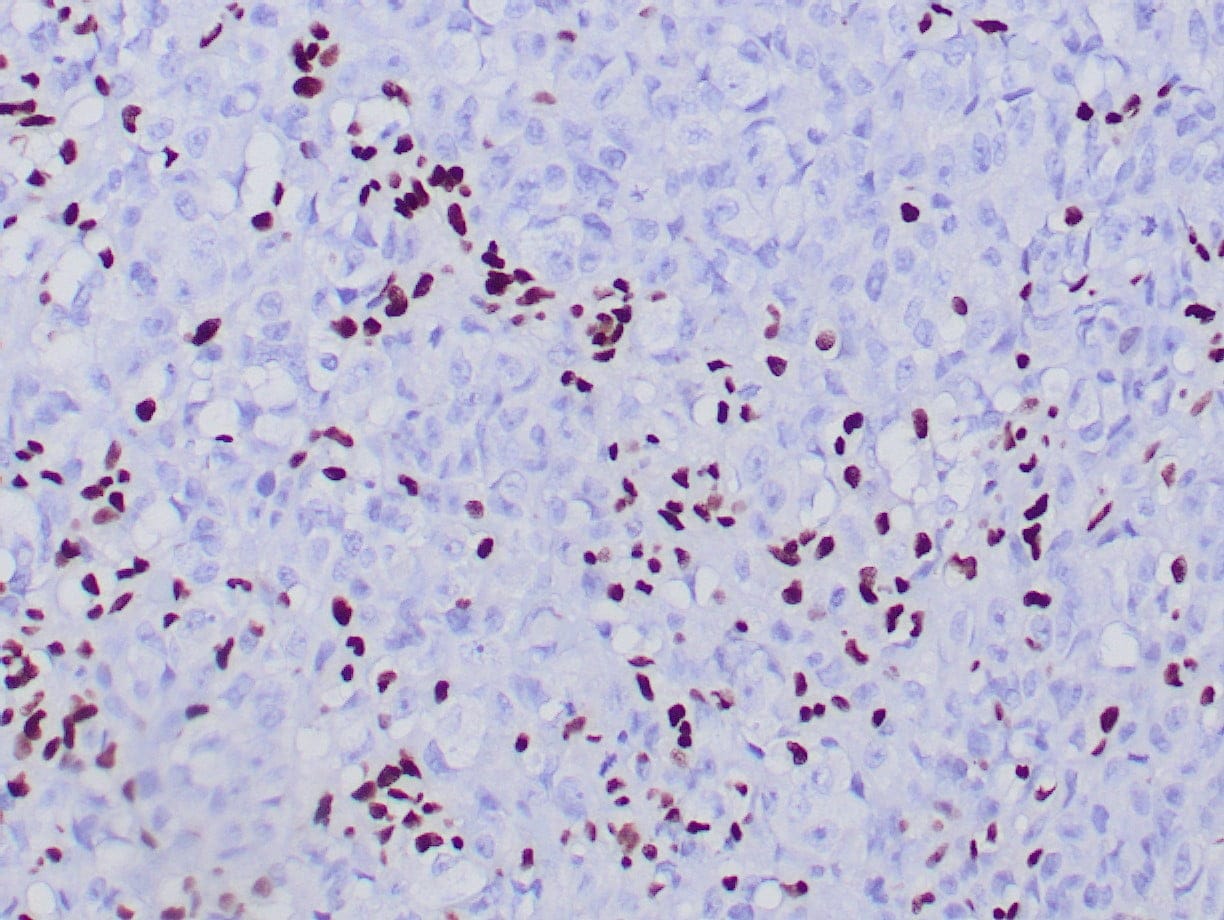

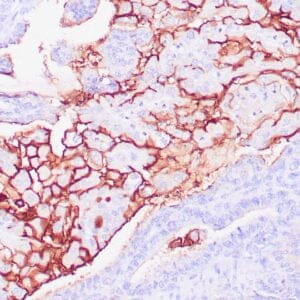
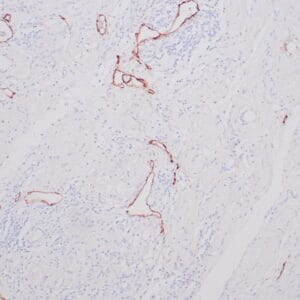
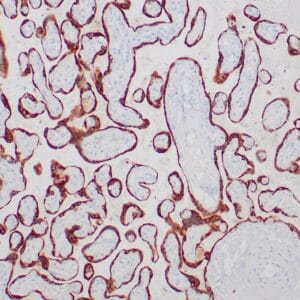
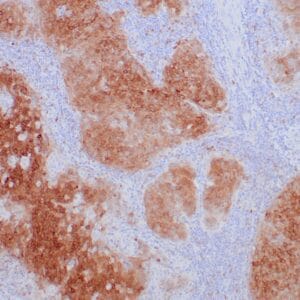
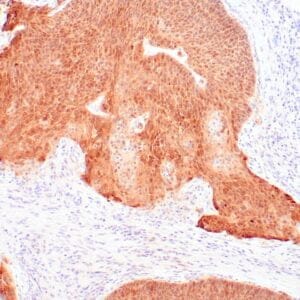


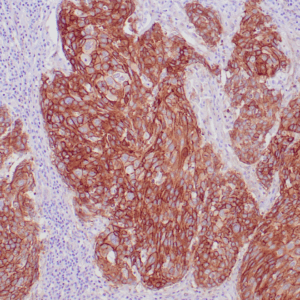

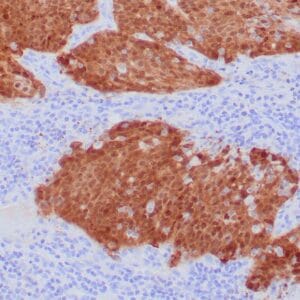
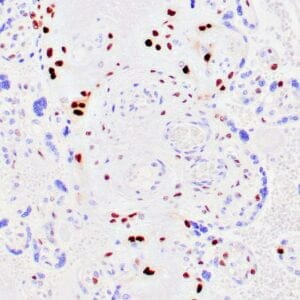
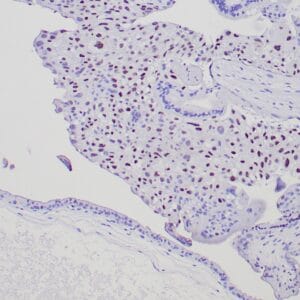
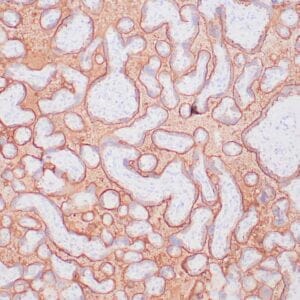
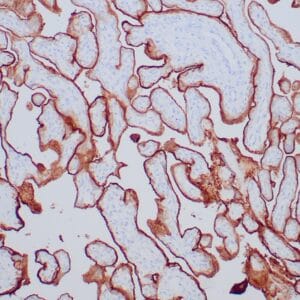
Reviews
There are no reviews yet.